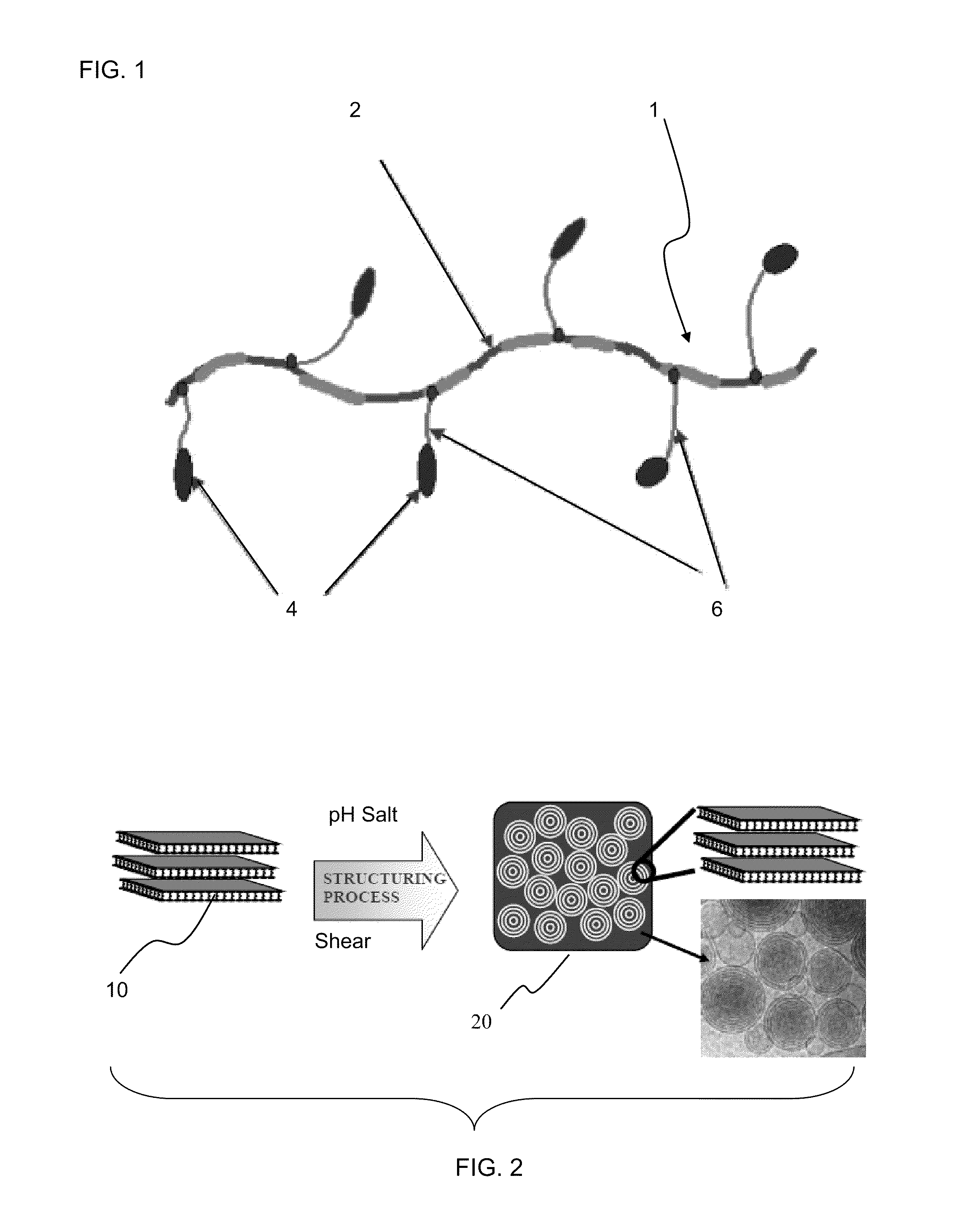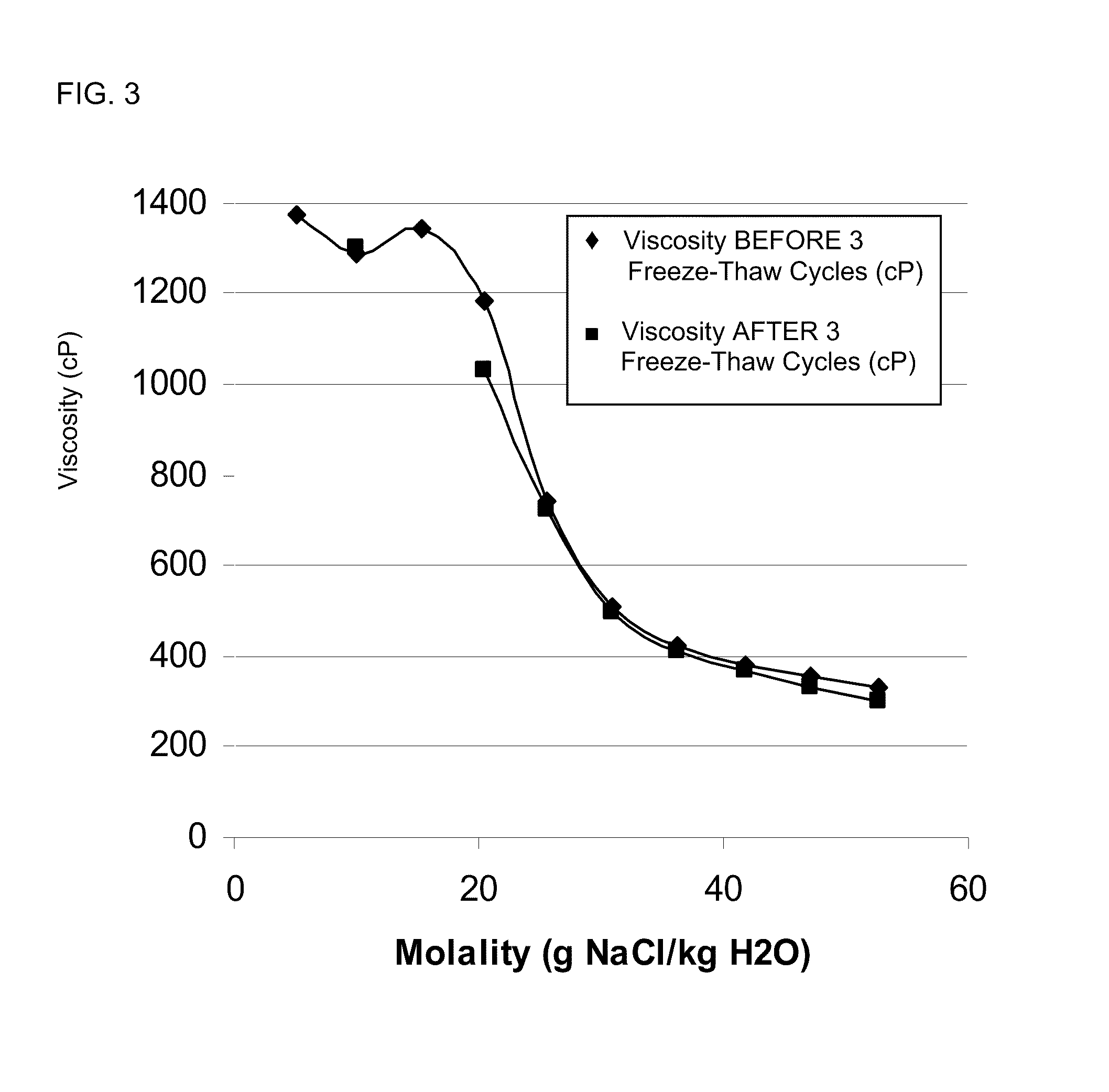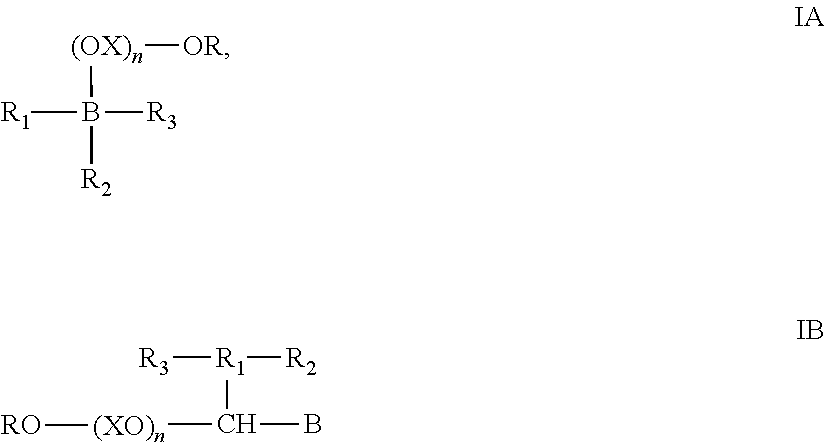Compositions with freeze thaw stability
a technology of compositions and stability, applied in the field of compositions with freeze thaw stability, can solve the problems of undesired large changes in rheological properties, undesired large changes in high sensitivity to relatively small variations in ph, electrolyte concentration, and the amount of polymer used, so as to improve the initial viscosity and low temperature viscosity, and achieve more stable compositions.
- Summary
- Abstract
- Description
- Claims
- Application Information
AI Technical Summary
Benefits of technology
Problems solved by technology
Method used
Image
Examples
example 1
Effect upon Freeze-Thaw Stability of Varying the Concentration of a Surfactant Composition Containing Sodium Trideceth Sulfate in Structured Surfactant Liquid formulations
[0712]Surfactant Blend 1, an aqueous blend comprising sodium trideceth sulfate, cocamide MEA and sodium lauroamphoacetate was employed.
[0713]The formulations of Surfactant Blend 1 were made using the following procedure:[0714]The initial blend contains 46.6 wt. % active surfactants in water. First, it was diluted with water to get the concentration needed;[0715]Then the pH has to be adjusted to 5-5.5 by addition of a 50% Citric Acid solution. This is the batch from which all the formulations will be made;[0716]A series of ten formulations was made by adding increments of 0.5% NaCl from 0.5% to 5% w / w of NaCl to the batch;[0717]After the addition of NaCl, the formulation was mixed for 45 minutes to make sure the NaCl is dissolved. All the formulations made in this study had been mixed for 45 minutes after the additi...
example 2
Comparison of the Effects of Yield Providing and Non-Yield Providing Polymers on Freeze-Thaw Stability
[0723]The following compares the effects of yield providing and non-yield providing polymers on Freeze-Thaw stability. Yield providing polymers increase the viscosity and provide yield to the formulation. Non-yield providing polymers also have a thickening effect but they do not provide yield.
[0724]The synthetic polymers used were the following:[0725]RHODIA HASE Polymer A and RHODIA HASE Polymer B;[0726]HASE polymers (from Rohm and Haas): ACULYN 22 and ACULYN 28 linear HASE polymer emulsions;[0727]ASE polymer (From LUBRIZOL): CARBOPOL SF-1.
[0728]RHODIA HASE Polymer A and RHODIA HASE Polymer B were composed of two different types of specialty hydrophobic macro monomers, which are Macro Monomer I and Macro Monomer II. RHODIA HASE Polymer A was composed of 4% w / w of Macro Monomer 1 and 6% w / w of Macro Monomer II. RHODIA HASE Polymer B was composed of 10% w / w of each of these polymers. ...
example 3
Influence of the Variation of the Level of Salt, Used with the Same Percentage of Surfactant Blend 1 and RHODIA HASE Polymer
[0775]A concentration of 2 wt. % NaCl was chosen for all the formulations. 2 wt. % NaCl was the salt level leading to the optimum viscosity for these three active levels of Surfactant Blend 1 (without the addition of polymer).
[0776]To test the effect of the addition of polymer compositions of 10 weight % Surfactant Blend 1 and 1 weight % Rhodia HASE Polymer A were made according the procedure described above but the levels of NaCl were varied.
[0777]As shown in the salt curve of FIG. 3, before freeze-thaw cycle, the optimum viscosity was reached for a concentration of NaCl between 1.5% and 2%. After freeze-thaw cycle, the 1.5% and 2% NaCl formulations were at the limit of their stability, i.e. they were just a little bit patchy, but they were not phases separated. From 2.5% to 5% NaCl, the formulations remained stable. Therefore 2.5% NaCl appeared to be a prefer...
PUM
| Property | Measurement | Unit |
|---|---|---|
| temperature | aaaaa | aaaaa |
| temperature | aaaaa | aaaaa |
| temperature | aaaaa | aaaaa |
Abstract
Description
Claims
Application Information
 Login to View More
Login to View More - R&D
- Intellectual Property
- Life Sciences
- Materials
- Tech Scout
- Unparalleled Data Quality
- Higher Quality Content
- 60% Fewer Hallucinations
Browse by: Latest US Patents, China's latest patents, Technical Efficacy Thesaurus, Application Domain, Technology Topic, Popular Technical Reports.
© 2025 PatSnap. All rights reserved.Legal|Privacy policy|Modern Slavery Act Transparency Statement|Sitemap|About US| Contact US: help@patsnap.com



